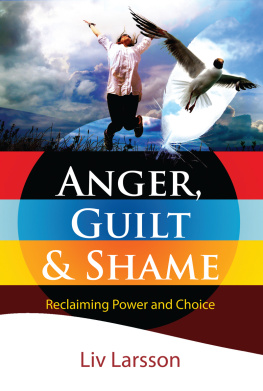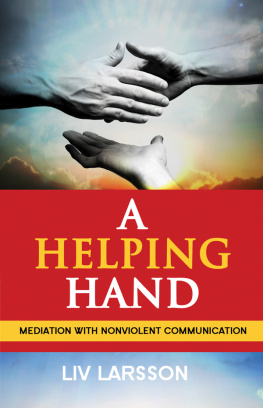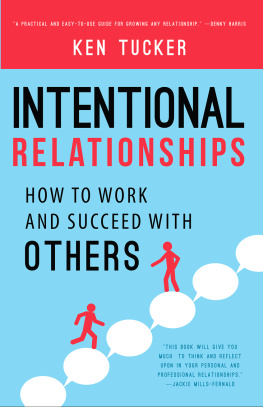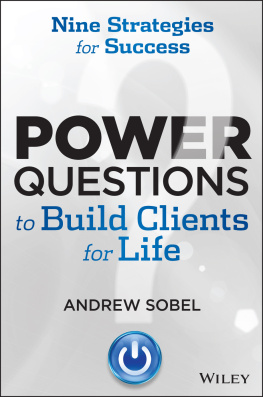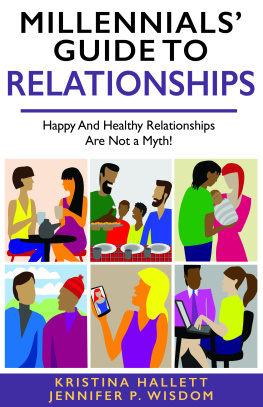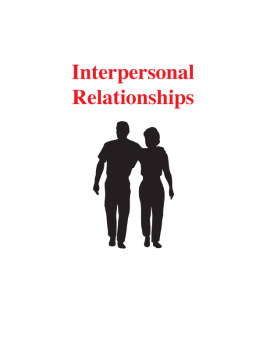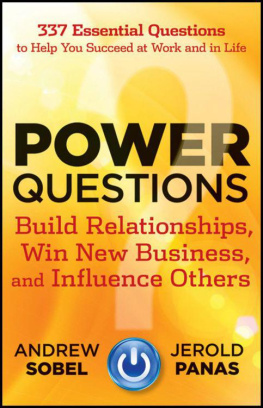Liv Larsson has studied relationships as a mediator and mentor for people in crisis. She also leads the course Relationship Evaluation . In addition, she has been exploring relationships within and outside the norm and has found that close relationships can be a source of personal growth and joy.
She is a certified trainer with CNVC (Center for Nonviolent Communication). She educates and mediates both in Sweden and internationally and teaches mediation and conflict resolution in various contexts.
Liv has written more then ten books on Communication, including, A Helping Hand. Mediation with Nonviolent Communication.
In the past few years she has specialized in Communication trainings based on anger, shame and guilt.
She has translated Marshall Rosenbergs books into Swedish. Together with Kay Rung she regularly leads relationship evaluations for couples, friends and families.
About NVC and Center for Nonviolent Communication.
Evaluating you relationships
What relationships are important to you?
What are you doing today to care for them?
Have you told those concerned how you feel?
Most of us regularly inspect the health of our car. If we forget to, we miss a chance to protect not only our car but also people from accidents. In order to create the relationships you desire it is useful to at least once a year, carry out a check up on your most important relationships. Take the time to do any repair work or adjustments that may prevent accidents.
Part 1 of the relationship evaluation will help you to reflect on how you perceive your relationship with another person. The aim is to help you get an overview of this, and of how you address different needs in your relationship.
You will get the most out of the evaluation if you and the person you choose to reflect on your relationship with, are doing it simultaneously. It will make it easier for both of you to talk about what you discover and perhaps to make some changes. It is beneficial if the other person is willing to reflect up on your relationship, but if not, you will still get a lot out of doing it on your own. You can gain valuable details about what you would do differently or what you want to ask of the other person. Remember that a relationship is not static, meaning that each evaluation is a snapshot photo which captures only what is happening in the moment, even if there may be things that keep reoccurring in the relationship.
There are no wrong or right answers; it is not about judging the relationship as good or bad, but about evaluating how well your needs are met.
The moment you start reflecting on your relationship, change is already happening and the situation has already changed. If you do another evaluation in two weeks time you will discover something very different from the last evaluation.
To really make the reflection meaningful, you need a little time to focus, so please be sure to find a place that allows you to sit in peace and quiet.
Start with Part 1 and then decide if you want to proceed with any of the other parts. Be attentive as to whether there are any specific questions that touched you or made you reflect deeper. It is important that you do not share some parts of the answers with the other person, without first having done some work on them yourself.
Instructions: Choose a specific relationship when you answer the questions. If you have more than one relationship you want to reflect on, focus on each one at a time. If you find yourself wanting to skip questions that do not seem relevant or meaningful, or even have difficulty answering, or do not find any response to at all, you may find that they have something important to tell you. Since what is requested in Part 1 of the relationship evaluation is to identify if needs are met or not?
I would like to take a few words to describe what I mean by needs. What I mean by the word need is something that all humans share. Needs are something innate, and universal, and which motivate us to act in life-serving ways. We could say that needs are the essence of life. All human behavior stems from attempts to meet our needs and these needs are never in conflict. If people can identify their needs, the needs of others, and the feelings that surround these needs, it will be easier to connect and build relationships in satisfying ways.
Needs are not tied to a person, place, time nor to a specific act but can be seen and met in a variety of ways. For example, I may get my need for love met when I get a hug from someone, or through singing, dancing, having sex, or by playing with children out in nature. The need for community can be met with different people. And the need for autonomy or freedom, in the way I use it here, can be experienced both if you are alone and if you are together with others, and even if you are imprisoned.
It is with this view of the word need that I suggest you do the relationship evaluation. Read more under Assumptions that help us to create satisfying relationships and review a list of common needs on page 27.
Relationship evaluation - Part 1 Basic evaluation
1. On a scale of 1-6, identify how important it is to you that the following needs are met in an intimate relationship.
| Not so important | Very important |
| Love | 1 | 2 | 3 | 4 | 5 | 6 |
| Meaning | 1 | 2 | 3 | 4 | 5 | 6 |
| Intimacy | 1 | 2 | 3 | 4 | 5 | 6 |
| Respect | 1 | 2 | 3 | 4 | 5 | 6 |
| Safety | 1 | 2 | 3 | 4 | 5 | 6 |
| Freedom | 1 | 2 | 3 | 4 | 5 | 6 |
| Honesty | 1 | 2 | 3 | 4 | 5 | 6 |
| Understanding | 1 | 2 | 3 | 4 | 5 | 6 |
| Passion | 1 | 2 | 3 | 4 | 5 | 6 |
| To have fun | 1 | 2 | 3 | 4 | 5 | 6 |
| Unity | 1 | 2 | 3 | 4 | 5 | 6 |
| Inspiration | 1 | 2 | 3 | 4 | 5 | 6 |
| Community | 1 | 2 | 3 | 4 | 5 | 6 |
| To be seen and heard | 1 | 2 | 3 | 4 | 5 | 6 |
| Other need(s) | 1 | 2 | 3 | 4 | 5 | 6 |
2. On a scale from 1-6, identify how well these needs are usually met in the relationship you have chosen to evaluate.
| Seldom met | Often met |
| Love | 1 | 2 | 3 | 4 | 5 | 6 |
| Meaning | 1 | 2 | 3 | 4 | 5 | 6 |
| Intimacy | 1 | 2 | 3 | 4 | 5 | 6 |
| Respect | 1 | 2 | 3 | 4 | 5 | 6 |
| Safety | 1 | 2 | 3 | 4 | 5 | 6 |
| Freedom | 1 | 2 | 3 | 4 | 5 | 6 |
| Honesty | 1 | 2 | 3 | 4 | 5 | 6 |
| Understanding | 1 | 2 | 3 | 4 | 5 | 6 |


